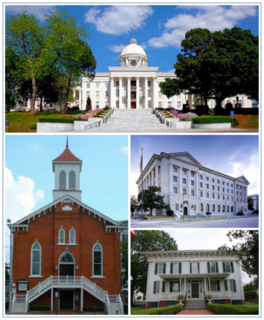
Fort Matanzas National Monument was designated a United States National Monument on October 15, 1924. The monument consists of a 1740 Spanish fort called Fort Matanzas, and about 100 acres (0.4 km²) of salt marsh and barrier islands along the Matanzas River on the northern Atlantic coast of Florida. It is operated by the National Park Service in conjunction with the Castillo de San Marcos National Monument in the city of St. Augustine.
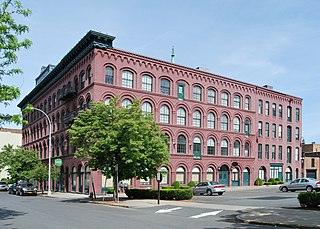
The W. & L. E. Gurley Building is a historic industrial building at 514 Fulton Street in Troy, New York, United States. Built in 1862, it is a classical revival structure that housed the W. & L. E. Gurley Company, a maker of precision measuring instruments. The Gurley Company was one of the first companies in the nation to make precision instruments. The building was designated a National Historic Landmark in recognition of this in 1983.

The Buckner Homestead Historic District, near Stehekin, Washington in Lake Chelan National Recreation Area incorporates a group of structures relating to the theme of early settlement in the Lake Chelan area. Representing a time period of over six decades, from 1889 to the 1950s, the district comprises 15 buildings, landscape structures and ruins, and over 50 acres (200,000 m2) of land planted in orchard and criss-crossed by hand-dug irrigation ditches. The oldest building on the farm is a cabin built in 1889. The Buckner family bought the farm in 1910 and remained there until 1970, when the property was sold to the National Park Service. The Buckner Cabin was listed on the National Register of Historic Places in 1974. The rest of the Buckner farm became a historic district in 1989. Today, the National Park Service maintains the Buckner homestead and farm as an interpretive center to give visitors a glimpse at pioneer farm life in the Stehekin Valley.

Ludlow Tent Colony Site is an area in Ludlow, Colorado associated with the Ludlow Massacre that was designated a U.S. National Historic Landmark on January 16, 2009. It is an archeological site.

The Bray-Barron House is a historic house in Eufaula, Alabama, U.S.. It was built prior to 1850 for Nathan Bray, who went on to serve in the Confederate States Army during the American Civil War of 1861-1865 alongside his three brothers. The house remained in the family until 1963. It was purchased by N. G. Barron and his wife Ruby Hutton Barron in 1965. It has been listed on the National Register of Historic Places since May 27, 1971.

The Kiels-McNab House is a historic house located on west Washington Street in Eufaula, Alabama.

The Guild-Verner House is a historic mansion in Tuscaloosa, Alabama, U.S..
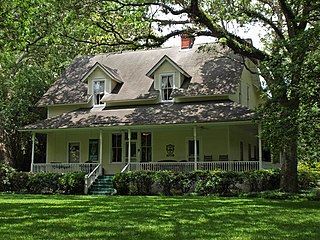
The Sunnyside Hotel is a historic house in Magnolia Springs, Alabama, U.S.. It was built in 1897 for Christopher McLennan. It was converted into a hotel by the new owner, Mrs William Harding, in 1913. In the 1940s, it was inherited by her sister and brother-in-law, who used it as a private home until the 1980s, when they sold it to new owners. In 1996, it was sold to David Worthington. It has been listed on the National Register of Historic Places since February 20, 1998.
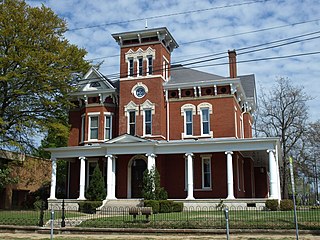
The Tyson–Maner House is a historic mansion in Montgomery, Alabama, U.S.. It was built in 1890 for Archibald Pitt Tyson, a former farmer turned real estate developer. It remained in the family until 1930, as it was inherited by his wife Ellen Nicholson Arrington in 1918 and later by their children. By the 1970s, it belonged to Carl Herbert Lancaster, an architect. It has been listed on the National Register of Historic Places since May 10, 1979.

The Steiner–Lobman and Teague Hardware Buildings are historic buildings in Montgomery, Alabama, U.S.. They were built by businessmen Louis Steiner and Nathan Lobman circa 1891 for their hardware store. By 1895, the Southern building was sold to William Martin Teague, the owner of the Teague Hardware Company. The buildings remained in the respective families as late as the 1970s. They have been listed on the National Register of Historic Places since January 31, 1979.

The Bass-Perry House is a historic house on a former plantation in Seale, Alabama, U.S.

The Samuel R. Pitts Plantation, also known as the Greenwood Plantation or the William J. Benton House, is a historic house on a plantation in Pittsview, Alabama, U.S..
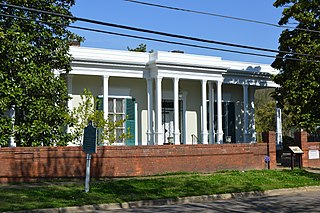
The Veranda House, also known as the Curlee House, is a historic house in Corinth, Mississippi, U.S..
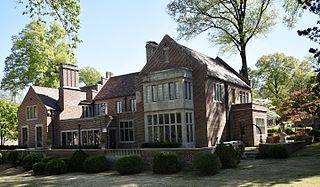
The Robert M. Carrier House, also known as the Matthews House, is a historic house in Memphis, Tennessee, U.S.. It was built in 1926 for Robert M. Carrier and his wife. In 1974, it was purchased by William S. Matthews, Jr.. It was designed in the Jacobean Revival architectural style by Bryant Fleming, a Professor of Architecture at Cornell University. It has been listed on the National Register of Historic Places since May 27, 1980.

The Boyce-Gregg House is a historic house in Memphis, Tennessee, U.S..

The Kincaid House is a historic house in Speedwell, Tennessee, U.S.. It was built circa 1840 by John Kincaid II for his brother, William Harrison Kincaid. In 1880, it was acquired by the Bryant family, who sold it to Bill Russell in 1898. It has been listed on the National Register of Historic Places since March 22, 1982.

The Willard-Clark House is a historic two-story mansion in Maryville, Tennessee, U.S.. It was built for B.F. Willard in 1886. The Willards owned the house until 1903, and it was purchased by J.L. Clark in 1905. In 1910, Clark added a portico, designed in the Classical Revival architectural style. They also the house to Elmer L. Hudson in 1929, who sold it to Granville R. Swaney in 1931. It has been listed on the National Register of Historic Places since July 25, 1989.
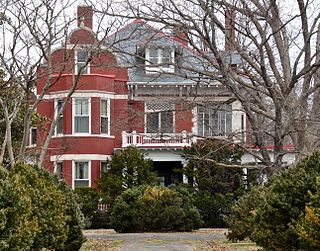
The Gov. Prentice Cooper House is a historic house in Shelbyville, Tennessee, U.S..

The Logan Henderson Farm, also known as Farmington, is a historic farm house in Murfreesboro, Tennessee, U.S.. Built as a slave plantation in the Antebellum South, it later became a dairy and cattle farm. It is now a horse farm.
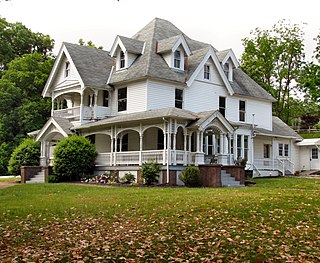
The LaFolette House is a historic house in LaFollette, Tennessee, U.S.. It was built in the 1890s for Harvey Marion LaFollette, the owner of the LaFollette Coal and Iron Company. LaFollette also built the North Tennessee Railroad. His brother Grant lived in the house until he sold it to the Russell family in 1930.
